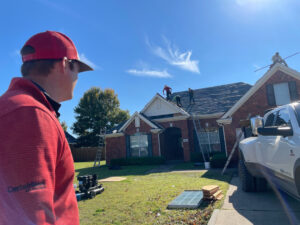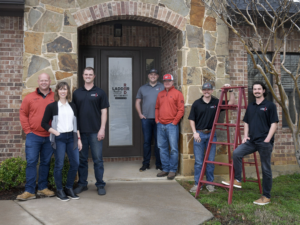Is it time for a new homeowner’s insurance plan? Maybe you’re buying a house or just reevaluating your plan. Make sure you understand insurance basics before you start comparing plans! Realtors, this would be great advice to share with your home buyers when they hit this step in the process, with so many decisions to make maybe I can help this one be a little less confusing.
Choosing a good insurance broker is a good place to start, they can help you compare plans and you’ll have someone to asks questions. But understanding the lingo and knowing what to ask them will benefit you! Contractors aren’t insurance experts, so let I’ll let the experts explain policy details to you. But we certainly see how the back end works day in and day out. Its important to understand how plans work when a claim is actually made and you need a contractor to get the job done, the real reason for insurance after all.
Understand Your Deductible
You first need to truly understand your deductible. Similar to paying a doctor your co-pay when you go in for an appointment, your deductible is the portion you have agreed to pay your contractor out of pocket for each claim before your insurance kicks in. A good, full coverage plan with a properly paid claim should pay the rest of the bill from there to restore your property to its pre-disaster condition.
Deductibles in Texas are now typically a percentage of your insured value, 1-2 percent is what we see most often. The higher the deductible the lower your monthly premium (payment) will be. So don’t just pick the lowest plan without understanding the difference. Remember that the deductible you sign up for is what you will be expected to pay when you make a claim. So claims for anything less than that value won’t be beneficial. You also need to be prepared to pay this deductible at anytime should your house sustain damage that needs addressing or that makes sense to utilize your policy for.
Many policies put time limits on how long after the damage occurred/was discovered in which you can make a claim. It can get harder or impossible after this to make a claim and you could be left to deal with the damage completely out of pocket. Also, some damage can need to be addressed quickly to avoid more damage and inconvenience. A damaged and leaking roof is an example of this, addressed quickly its a roof replacement, if left it becomes interior damage, dry wall repair, painting, mold, etc. We also see people who put off handling damage but find when they want to sell their home it becomes an issue and they are no longer able to utilize the policy they’ve been paying for all this time to help them.
Bottom line: be honest with yourself and pick a plan with a policy that sets a deductible you are prepared to handle down the road and utilize the policy you pay for when it makes sense too!
Claim Response Matters
While a good agent who helps you pick and understand an appropriate plan for your needs is valuable, remember this is not the person who will be handling your claim. The ultimate purpose of your policy is to make restoring your property after a disaster a manageable cost for you, to make something unpredictable a little more predictable, to make your investment whole again. None of this has anything to do with who helped you through the process of picking a plan or how that process went. Its on to your insurance company’s claim department.
Find out the company’s reputation on the back end, not just the sales end. Ask them and ask others. How well do they pay out claims? It should be cut and dry what needs to be included on a claim but sometimes things get left off. Some insurance carriers are known for “light” claims and putting up fights when requests are made to make the claim complete. Ask some contractors what insurance company they dread working with. Ask friends who have actually made claims how it went. also find out how the company pays claims, most pay a portion up front and a portion after the work is done.
Ultimately, that friendly face that signed you up for the policy doesn’t matter when your looking at your damaged house and not enough money to fix it right.
RCV vs. ACV
This is an important distinction: Do not choose an Actual Cash Value plan without fully understanding what you are giving up.
Most plans we see are replacement cost value plans, so they pay for the current value of the damaged property AND they pay for the cost to replace it to like condition. So if your 10 year old roof is damaged by hail, they pay what it costs to get a new roof. Usually they first give you the ACV value up front and then they pay the remaining cost of replacement after you have followed through with the replacement.
An ACV only plan ONLY pays you that first check. It only pays you for the CURRENT value of the damaged property, not the cost of replacement. If your 10 year old roof gets hail damage they say a new roof would have cost X but this roof is 10 years old, so they depreciate it. You are only paid for the life lost on the product, you are not paid enough to replace the item. You have to be prepared to cover whatever amount beyond that, there’s no second check coming to pay for the replacement.
Sadly, we see many older homes with these cheaper plans and the owner’s don’t realize what they’ve gotten into. The remaining cost to replace and bring anything up to code is all on them, and they didn’t understand that. They now have a leaking roof they can’t afford to address. This can be a big problem if the house has decking issues for example and can’t withstand a new roof installation. Decking replacement is a significant added cost that an RCV plan would have covered as a necessary part of the replacement, but one of these ACV only plans will not.
For even more information you should know about picking your homeowner’s insurance plan check out this great article on Investopedia.





